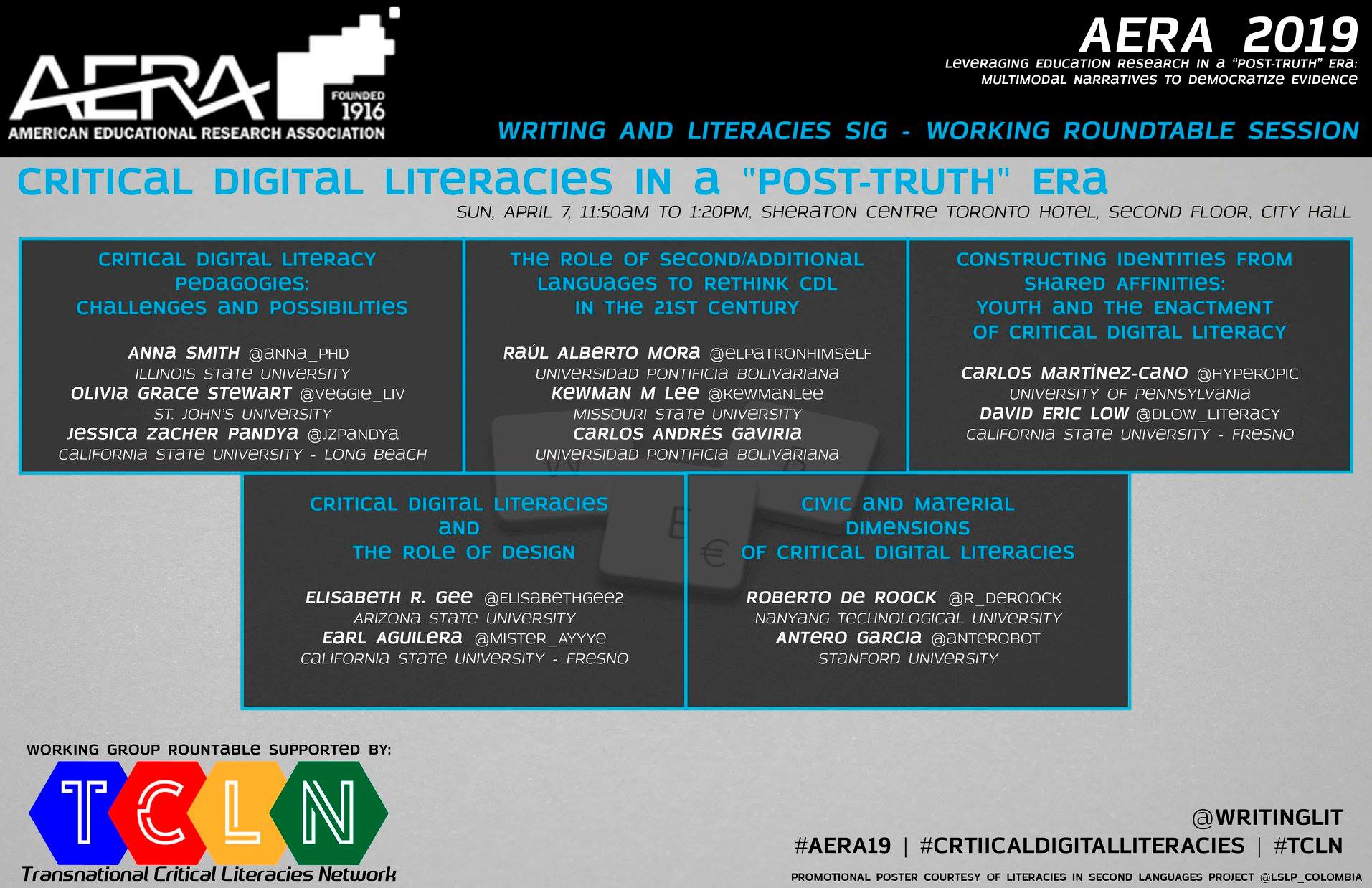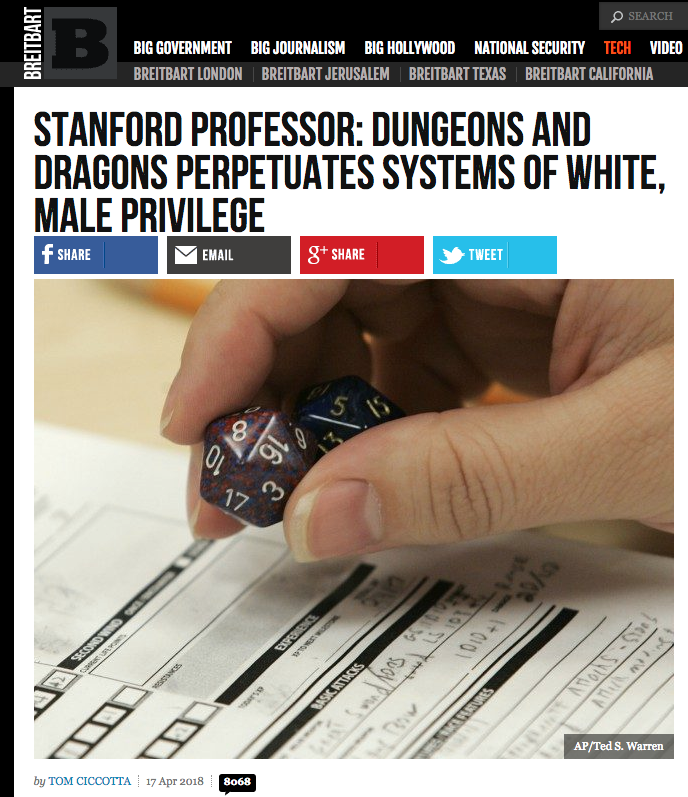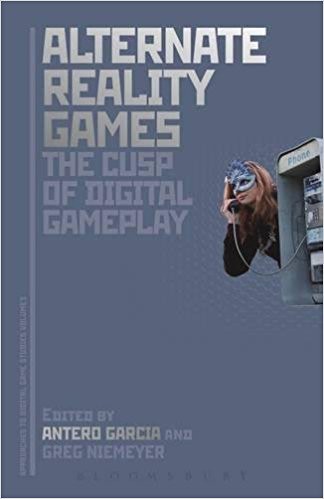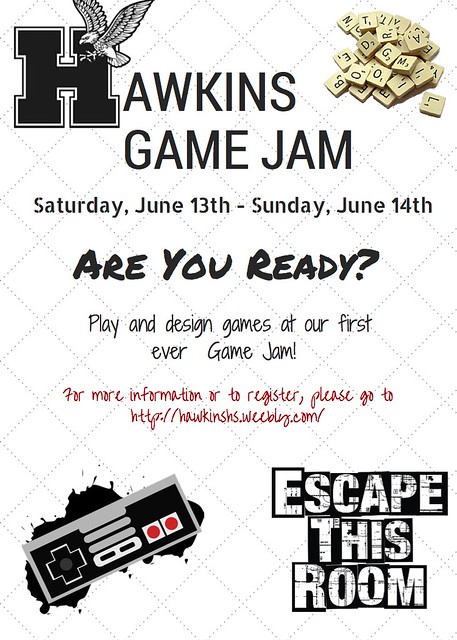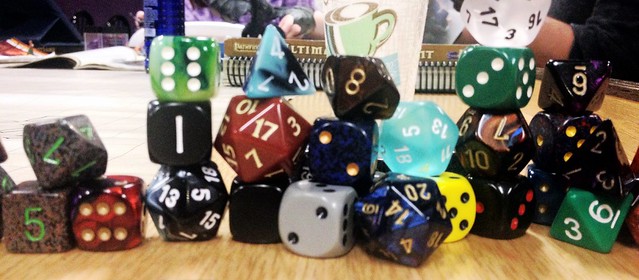
[tl;dr version: The next few months are going to redefine how we understand roleplaying games in popular culture. A sub-culture war of opinions and capitalism is playing out in a small sector of the board game industry and it will reverberate throughout society.]
Next month, the first in a series of releases will usher in the Fifth edition of Dungeons & Dragons. The game will be published by Wizards of the Coast (publisher of the Magic: the Gathering collectible card game). Wizards, in turn, is owned by Hasbro (yes, like the publisher of Transformers and Monopoly products). For both companies, D&D is a relatively small-potatoes product. However, the game is engrained in today’s society in ways that extend far beyond the line of hardbound books that are the basic rules set for the game.
For example, when I have been telling people I have been studying roleplaying games lately, I usually have to offer a bit more context. It typically goes like this:
Me: “Lately, my research has focused on stuff related to roleplaying games.”
Other person: blank look
Me: “Like Dungeons & Dragons… y’know, nerds rolling dice.”
Other person: look of recognition
For the general public, RPGs are tied to this specific brand: Dungeons & Dragons. In fact, Jon Peterson’s book makes the argument that the term “roleplaying game” was basically created so competitors in the ‘70s could publish products and claim they were “like D&D” without worry of litigation (even in those early days, D&D’s owners knew the value of brand recognition). For those not entrenched in the litany of robust titles and games available today, D&D is a signifier of a genre, a disposition, and a product rolled up in one. D&D is how most people understand RPGs (even vaguely) and its popularity – in recent books, TV shows like Community, and immeasurable influence on game and film industries – is huge.
However, if you haven’t been playing RPGs in the past few years you would be surprised to know that D&D – by the few, foggy metrics available – is not the top-selling or most popular RPG being played. Though there are many reasons behind the dwindling in popularity, the most central one is that D&D’s creators ended up fracturing their market base. Different editions of the game are more popular to different players. As illustration, note that when your phone or your computer’s operating system gets updated you inevitably shift over to the new platform (often when the dwindling lifecycle of your current device requires you to buy new hardware). We are naturally predisposed to upgrading to the next OS with digital tools. However, when your operating system is a set of books, these shifts aren’t required and – if you take umbrage with new system mechanics (such as many did when D&D 4th edition seemed to be paralleling game mechanics seen in World of Warcraft) – you could always just go back to an earlier, more familiar edition of the game.¹
The Rise of Pathfinder and OSR
At the same time that D&D’s creators fractured their market, they also opened the door to 3rd party publishing. This, by all accounts, was a good thing: it allowed other publishers to share their material and expand what is available for the game without fear of lawsuit.² However, in doing so, one company, Paizo (once a publisher of official D&D magazines) published a cleaner, more refined version of the 3.5 edition ruleset. By setting a new path away from the 4th edition changes, this new game, Pathfinder, has become the dominating market force in RPGs. Pathfinder is a legal remix of D&D and is currently played and bought by more players than D&D products.
Similarly, with the rules for new editions of D&D getting evermore complex, older players have romanticized the simplicity of earlier incarnations of the game. The Old School Renaissance (OSR) movement also refines earlier rules from D&D and makes them more accessible.³
Throw into this mix popular RPGs related to recognized otaku culture like Star Wars and Firefly4 and you can see the way D&D has diminished for players. I should briefly add that the indie-RPG market is also booming. Kickstarter and crowd funding have done amazing work at democratizing the RPG industry in generally positive ways (my friend Calvin’s Kickstarter, for example, has a few more days to go!).
The Prodigal Son Returns
And so here we are in 2014:
It is the 40th anniversary of “the world’s oldest fantasy roleplaying game.”5 Starting this summer, D&D is returning with a new, fifth edition (simply called Dungeons and Dragons – probably in an effort to avoid the edition wars). Info about the new edition and an extensive open playtest of it have made this a speculative time for the RPG industry. When new products that are not D&D are announced to be released this summer (usually at the industry’s main convention, Gen Con) they do so not so much with an elephant in the room as with an elder red dragon that is devouring the elephant and lighting the room on fire.
By the time the game comes out there will be seven different editions of the game available (the pre-“advanced version, 1st, 2nd, 3, 3.5, 4, and then fifth) digitally6 . This new edition looks like it may simplify the rules for newer players and add flexibility for players to adjust complexity.
D&D has many different markets it is trying to address with this new edition and it will be interesting to see if it can reunite its fractured kingdom. As a researcher that’s been primarily interested in what happens at the gaming table (and less at the macro-level of RPG industry described in this post) I’m curious about a few things related to the release of the new edition:
- How will the market power of Hasbro help expand the audience and reach of RPGs? (There aren’t any other companies in this industry that regularly sell in places like Target and Walmart.)
- How will players of Pathfinder and other OGL-licenses respond to or pay attention to the new edition? (Pathfinder’s publisher, Paizo is basically taking an official stance of ignoring the new release and letting the buzz from the summer ride out while still releasing their own products like their new superdungeon.)
- More generally, how will third part publishers affect my fifth edition experiences at the game table? (Wizards of the Coast has yet to explain what kind of 3rd part publisher support they will have for the new version of the game but have essentially said they are working on it.)
- With added attention to the high fantasy world of D&D, will the stories and tropes being taken up by players shift? (In addition to my footnoted Sword and Sorcery game, I currently play in a Deadlands campaign (think Lovecraft meets the wild west… and coming to a TV near you!)
- How will D&D support players’ use of technology? (Players today use tablets, dice-rolling apps, video conferencing, and a bevy of other tools to make playing analog RPGs easier than ever before. D&D’s character sheets used to be hidden behind a user login screen for earlier editions of the game, further isolating one market.)
For the niche market and culture of RPGs (which is actually a growing market along with board games), D&D’s new edition is not a big deal. It is the big deal of the summer.
Notes
- By the way, there is no easier way to incite nerd rage in a game store than by asking players to discuss if D&D 3.5 or D&D 4th edition is better. The times I’ve seen this happen I have been embarrassed by all parties.
- There is a longer post to write at some point about copyright, the Open Gaming License, and parallels with open source software.
- Point in fact, I have been running a D&D game this summer for friends and have been using a system called Swords and Sorcery it is an accessible, free text built on the backs of D&D’s original creators.
- Firefly is also caught up in confusing licensing deals, meaning there are two different RPG systems: one related to the film license for Serenity and one for the television show.
- That quote is an interesting one. Pathfinder can’t legally say D&D, so it hints at the product it is based upon. It signals to consumers that it is a D&D product to draw business to itself. And it works.
- Check out that pitch-line: “Every Edition Available Again!”
Tell people this is awesome:




